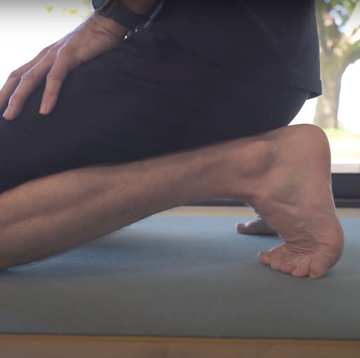Symptoms
You will have developed an increasing ache deep in the calf, probably after a long run, as the muscle within the sheath is restricted from the natural expansion that exercise produces.
Signs
An experienced practitioner should be able to put their fingers on the site of the pain, though they shouldn’t discover any acutely tender denser areas. If the cause isn’t a compartment problem, you may also notice colour changes or weakness within the leg.
Medical investigations
If there is doubt about the diagnosis, you may need the usual x-rays and scans, not forgetting that the pain may originate in a disc lesion in your back. Damage to the veins can be excluded using a Doppler, a test using sound waves.
What else could it be?
Dr Patrick Milroy: stress fractures, How to recognise it, how to overcome it, tibial periostitis, nerve and artery entrapment and blockage, referred pain from a lumbar disc, infections, tumours, and pronation syndromes of the foot.
Self-treatment
RICE as usual, but ice to reduce inflammation and elevation to eliminate gravity are the most appropriate. As it settles, gradually stretching the calf will speed healing, while you should also look back over your training diary for a cause.
Medical treatment
Although most cases recover with rest, ultrasound treatment will hasten matters. There is an extremely small chance that you’ll need surgery to release the sheath if biomechanical changes by a podiatrist are ineffective.
A simple foam roller routine for runners
In most cases you should be running fairly normally, though not racing, after a week. The more obsessive among you will run through it – painfully!












